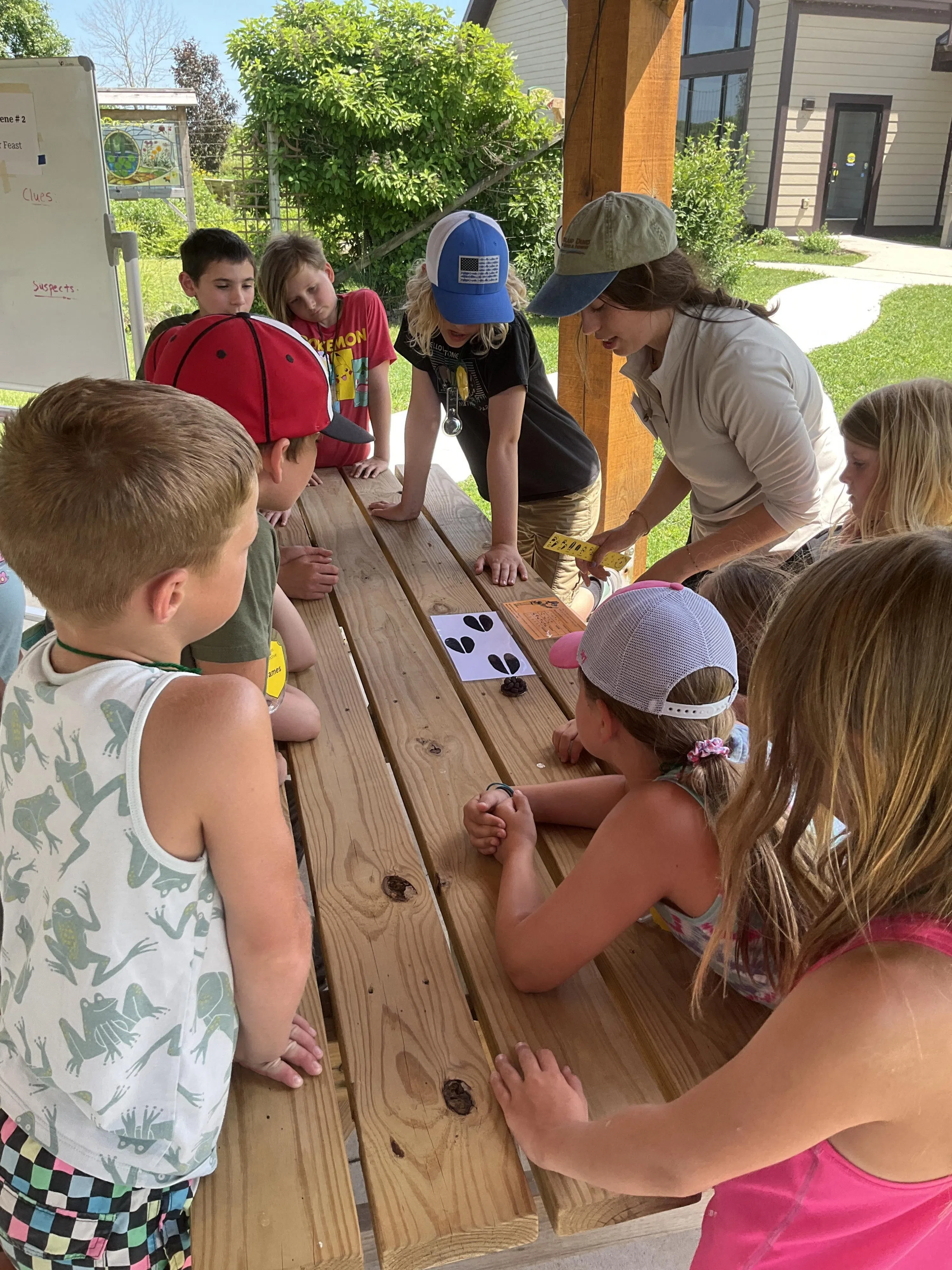
Photo Credit - Woodland Dunes Nature Center Summer Intern Cielo Gutierrez Kuhaupt
The following article was written by Natalie McNeely, a summer intern at the Woodland Dunes Nature Center.
Growing up, I enjoyed spending time outside, and often the highlight of my summers growing up was visiting my local state parks and nature centers. My favorite aspect of working at Woodland Dunes this summer has been witnessing how much children can learn simply by being curious and having fun outside. Nature truly can be one of the best classrooms, and during our recent Dunes Detectives program, the kids reminded me just how true that is.
The program was for kids ages 7 to 11, and they got to become wildlife detectives for the day. Their job was to solve three different “critter crimes” around the nature center using wildlife skills, such as tracking, scat identification, and close observation. The three crimes they solved were known as the Birdseed Bandit, The Flower Feast, and Predator’s Supper. Each crime scene came with clues that they had to piece together to determine what had happened, utilizing their detective skills.
The crime I wanted to highlight was the Flower Feast. In this case, the gate to the butterfly garden had been left open, and something had come in and eaten the leaves of our flowers. The kids had to figure out who the suspect was. There were clues we had staged, but also genuine clues, which were fun to find, as everyone seemed to discover different ones for various animals. However, after reviewing our clues, we were able to narrow down our suspects to a rabbit or a deer. Before solving the case, we took a close look at some animal skulls and learned how to distinguish between predators and prey. One of the easiest ways to do this is by looking at eye placement. We taught them a little rhyme to help remember it: “Eyes on the side like to hide, eyes on the front like to hunt.”
They caught on fast. What really impressed me was when they began to notice differences between the teeth of different herbivores. We pointed out that rabbits have flat, sharp front teeth, which are well-suited for cutting leaves like scissors, whereas deer lack their top front teeth and instead shred the leaves of the plants that they eat.
The leaves at our Flower Feast crime were shredded. It was fun to see how they remembered what they had learned earlier and were able to apply it to solve the mystery of who had been in the butterfly garden. Based on the shredded leaves taped off at the crime scene and the way the plants had been eaten, they concluded that the deer was the culprit. They were right, and it was so cool to see them light up with excitement after putting it all together. While a deer eating a plant is not a crime, it is simply wildlife living in its natural habitat. It can be fun to piece together different critter mysteries through different tracking and observation skills.
Co-teaching programs like these have been the highlights of my summer. Nature has a way of being fun, messy, and full of surprises, and it’s even better when you get to experience it alongside curious kids. I have enjoyed my time here this summer, and moments like these remind me why this kind of work means so much to me.












